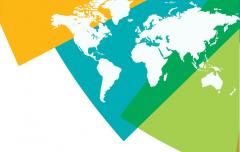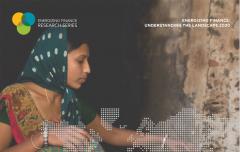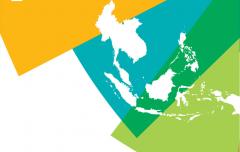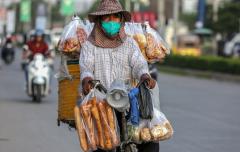South Asia should prioritize sustainable energy to address energy access gaps and accelerate economic recovery
As 2020 comes to an end and the world continues to face ongoing challenges from the COVID-19 pandemic, a new guide from Sustainable Energy for All (SEforALL) shows that South Asian countries can use this moment to strengthen sustainable energy policies and finance to accelerate their economic recovery, close energy access gaps and improve the lives of vulnerable populations in the region.
South Asia is home to some of the world’s most populous countries with the largest energy access deficits, particularly access to reliable electricity for productive use and clean cooking solutions. Though countries in South Asia have made substantial progress in recent years, according to the new Recover Better with Sustainable Energy Guide for South Asian Countries, the pandemic is putting this regional progress at risk and calls for countries to prioritize investments in sustainable energy. The latest guide from the Recover Better with Sustainable Energy series suggests South Asian countries should invest 25 percent of stimulus budgets in closing energy access gaps, improving energy efficiency and increasing deployment of renewable energy.
This investment will directly support faster progress on Sustainable Development Goal 7 (SDG7) - access to affordable, reliable, sustainable and modern energy for all by 2030. This progress is critical for South Asia as the latest data shows that 152 million people in the region lack access to electricity and 900 million lack access to clean cooking.
The region also has vast untapped potential for energy efficiency and renewable energy progress. Present trends show that South Asia will not meet the SDG7 targets of doubling their renewable energy share and increasing energy efficiency by 2030 if they do not act now.
An ambitious Recover Better strategy also makes economic sense for countries. By acting on the enabling measures put forward in the Recover Better guide, governments can benefit from increased GDP impact. For instance, if South Asia fulfils its currently estimated investment potential of USD 411 billion on renewable energy, the total added GDP effect to the economy will be 382 billion, cumulative by 2030. Increased investments will also further enhance and strengthen the regionalization of upstream and downstream manufacturing value chains for renewable energy technologies in South Asia, creating new jobs and localized economic growth.
“South Asian countries have made strong progress over recent years in closing access gaps by making it a political priority across government. Faced with a unique opportunity to Recover Better, countries should renew this commitment and invest in sustainable energy of the future that will unleash a range of economic, employment, commercial, health, and gender benefits for their citizens,” said Damilola Ogunbiyi, CEO and Special Representative of the UN Secretary-General for Sustainable Energy for All and Co-Chair of UN-Energy.
The new guide offers countries a set of enabling policy measures to adopt in their pandemic recovery and to channel stimulus packages towards, including:
- Enhancing policy and institutional frameworks: Countries in the region need to strengthen their present policies and institutions further and enhance their frameworks to remove structural barriers to clean energy investments. There is a need to further improve the progress made in the region through capacity building, regional and international cooperation, and ease of doing business.
- Investing in people: This should all be underpinned with an investment in human capital and the skills to meet the booming job potential in sustainable energy.
- Investing in clean energy instead of fossil fuels: The region needs to focus more on the “sunrise” sector of renewable energy and move away from fossil fuels. To attract more investment, countries should move towards cost-reflective tariffs that do not disincentivize renewable energy.
If enacted, these enabling measures will help lead to cheaper energy provision, lower environmental impacts and improved agriculture, gender, and health outcomes. This re-set can also spark progress at the speed and scale needed to meet SDG7 and help put the global economy on a trajectory in line with the Paris Agreement and Sustainable Development Goals. Read the guide in full here.
SEforALL has developed The Recover Better with Sustainable Energy Guide series to support countries as they continue to develop their post-COVID-19 recovery plans and stimulus packages. The guide is part of a series that includes guides for countries in Africa, the Caribbean and Southeast Asia.
Note: South Asian countries for this report are defined as member states of SAARC (South Asian Association for Regional Cooperation): Afghanistan, Bangladesh, Bhutan, India, the Maldives, Nepal, Pakistan and Sri Lanka.
Photo credit: Asian Development Bank




